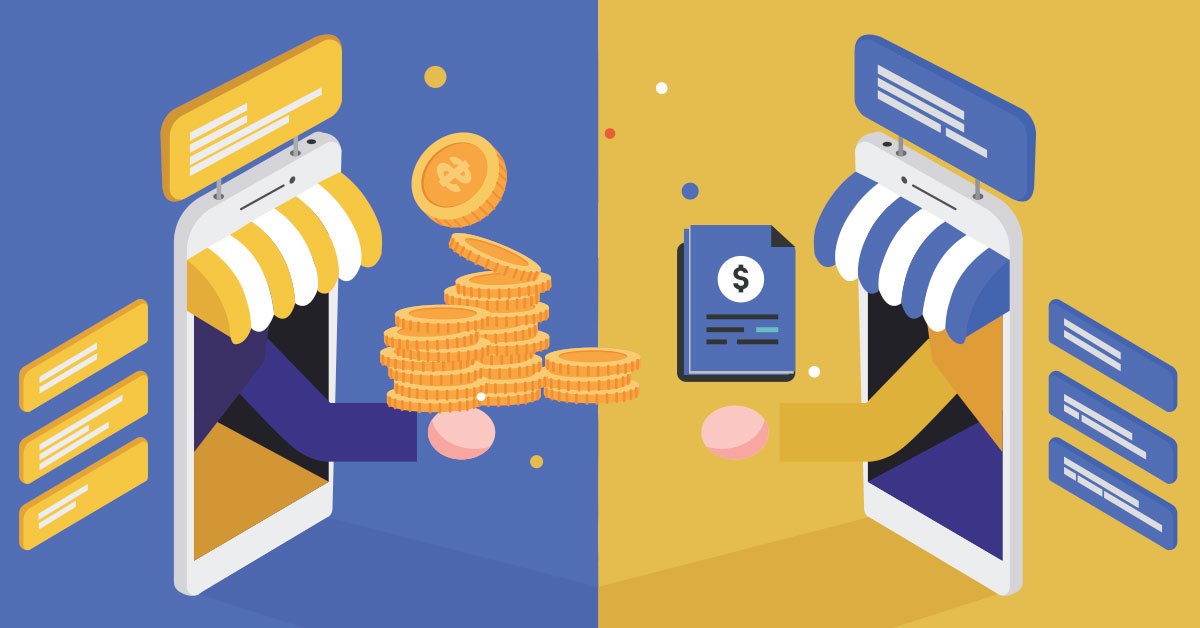
With the cost of living rising, you may have considered getting a loan from the bank, whether this be for medical needs, home renovation, or purchasing property, the list is endless. However, have you considered peer-to-peer (P2P) lending? This article goes in-depth on what peer-to-peer lending is, its pros and cons, how it works and why you might just use it over getting a loan from a bank.
What is Peer-to-Peer Lending?
Peer-to-peer lending (P2P lending) is the process of getting or giving a loan to another individual or business, it is also referred to as P2P lending, social lending or crowd lending. It allows borrowers to receive funding while avoiding other routes of financing such as banks or building societies. Peer-to-peer lending operates through online platforms such as: LoanPad, Assetz Exchange and Axia Funder.
P2P lending started in 2005 with the introduction of Zoopa, the first P2P platform within the UK; P2P lending has been growing exponentially within the last 15 years and is expected to grow at a compound annual growth rate (CAGR) of 20.2% from 2023 to 2030.
Why Use Peer-to-Peer Lending?
Lenders
Lenders may consider using P2P lending for several reasons such as:
Higher Returns
P2P lending offers the potential for higher returns (interest rates) compared to other investment vehicles such as bonds or savings accounts as the lender takes on more risk when offering a loan to those who may not qualify for traditional loans.
Diversification
Investors can diversify their investment portfolios via lending to multiple borrowers across different sectors and risk levels rather than lending one large lump sum.
Flexibility
P2P lending offers lenders flexibility with investment amounts and loan terms, it allows the lender to only lend to borrowers on terms they’re most comfortable with, almost tailoring the loan requirements to suit the lender.
Layers of Security
Relating to the previous bullet, P2P lending platforms provide detailed information regarding borrowers, including their credit score, employment status, loan purpose, financial history and income level. This type of information lets the lender be selective with what risk they want to take on.
Borrowers
Borrowers may consider using P2P lending for several reasons such as:
Access to Funding
Borrowers may not qualify for a loan at banks or building societies for reasons such as poor credit score, limited credit history, seeking funds for unconventional purposes or maybe small businesses without an established credit background, the list goes on. P2P lending allows these borrowers who may not qualify for a loan from a bank to get funded.
Transparency
Traditional lending methods often have hidden fees or terms which can make repaying the loan back more difficult. P2P lending platforms disclose all relevant fees regarding interest rates or penalties, allowing the borrower to make informed decisions and avoid unexpected fees.
Flexibility
P2P lending offers borrowers flexibility when choosing loan terms, loan amounts, and repayment periods, which again, allows borrowers to also tailor their loan to specific requirements, whether that be to a project or expenses.
Credit Building
Borrowers with no established credit profile or background can begin to build and improve their creditworthiness over time. Payments are reported to credit bureaus, contributing to building their credit score and improving credit history. This can help the borrower get access to different methods or opportunities to funding such as access to lower interest rates on loans.

Peer-to-Peer Disadvantages & Risks
As with any type of lending, there are advantages and disadvantages. Here are the main pros and cons of P2P lending.
Illiquidity
P2P loans are typically illiquid investments, meaning that funds are tied up for the duration of the loan term. Unlike publicly traded securities, there is no secondary market for P2P loans, making it difficult for investors to sell their loan holdings before maturity if they need access to cash.
Counterparty Risk
This is the risk that the counterparty involved within the contractual agreement may fail to meet their obligation and default on their loan. This would result in a loss from the lender, emphasising the importance in lending aligned with your risk tolerance.
Credit Assessment Challenges
P2P platforms often rely on technology and alternative data sources to assess borrower creditworthiness. While these methods can provide valuable insights, they may not always accurately predict borrower behaviour or financial stability. As a result, there is a risk of misjudging borrower credit risk and experiencing higher-than-expected default rates.
Market Volatility
P2P lending platforms may be more prone to market volatility and economic downturns compared to traditional banks. Since P2P loans are often unsecured and carry higher interest rates, they may be more sensitive to changes in borrower behaviour and economic conditions.
Common P2P Uses
Personal Loans:
- Debt Consolidation: Combine multiple debts into a single loan with a potentially lower interest rate.
- Medical Expenses: Cover unexpected medical bills or elective procedures.
- Home Improvement: Finance renovations, repairs, or upgrades to your home.
- Wedding Expenses: Pay for wedding costs, including venue, catering, and attire.
- Vacations: Fund travel and vacation plans.
Business Loans:
- Start-Up Capital: Obtain funding to start a new business venture.
- Business Expansion: Finance the growth of an existing business.
- Equipment Purchase: Buy new or upgrade existing equipment.
- Working Capital: Ensure smooth cash flow for operational needs.
Real Estate Loans:
- Property Purchase: Finance the purchase of real estate.
- Renovations: Fund renovations or improvements on a property.
- Real Estate Investment: Invest in property development or flipping.
Educational Loans:
- Tuition Fees: Pay for college or university tuition.
- Books and Supplies: Cover the cost of educational materials and supplies.
Emergency Expenses:
- Unexpected Bills: Manage sudden expenses such as car repairs or household emergencies.
- Relocation Costs: Cover the cost of moving to a new location.
Getting Started with Peer-to-Peer Lending
For Borrowers
Research Platforms:
- Identify reputable P2P lending platforms such as the ones mentioned earlier.
- Compare interest rates, fees, loan terms, and borrower requirements.
Create an Account:
- Sign up on the platform and complete all of the identity verification checks.
- Provide detailed financial information, including income and employment status.
Submit a Loan Application:
- Specify the loan amount and terms you need.
- State the loan purpose and upload any required documents.
Get Approved and Listed:
- Undergo a credit check to determine your creditworthiness.
- Your loan request is listed on the platform for potential lenders to fund.
Receive Funds and Repay:
- If funded, receive the loan amount in your bank account.
- Meet the repayment schedule to maintain a good credit score.
For Lenders
Research Platforms:
- Again choose a reputable platform.
- Understand the fee structures and potential returns.
Create an Account:
- Register and complete identity verification on your chosen platform.
Deposit Funds:
- Transfer the amount you wish to invest into your P2P lending account.
- Set your investment criteria based on risk level and desired returns.
Select Loans to Fund:
- Review available loan listings and borrower profiles.
- Diversify your investments across multiple loans to reduce risk.
Monitor and Manage Investments:
- Regularly check the performance of your investments.
- Consider reinvesting returns to compound earnings.

Conclusion
In conclusion, P2P lending offers an opportunity which traditional loans may not offer. There isn’t necessarily an overall better option, it is completely dependent on your own personal situation and what is best suited for yourself.
Borrowers can obtain funding for various needs, from personal expenses to business ventures, often with more favourable terms and transparency.
Lenders can potentially get higher returns and the ability to diversify their investments across multiple loans. However, it’s crucial to be aware of the risks involved, such as illiquidity, and counterparty risk to and consider your own personal risk tolerance.
For more articles on currency and economics, make sure to stay posted on our weekly articles at CurrencyTransfer in our Expert Analysis section. We also post daily updates on the market with our Market Commentary.
Sign up for an account with CurrencyTransfer today for free, and you’ll be assigned an account manager who will help you every step of the way.
Caleb Hinton
Caleb is a writer specialising in financial copy. He has a background in copywriting, banking, digital wallets, and SEO – and enjoys writing in his spare time too, as well as language learning, chess and investing.



